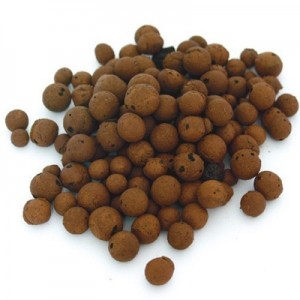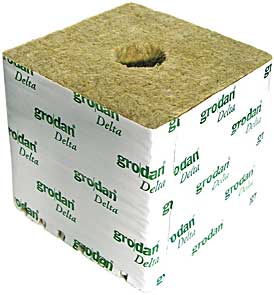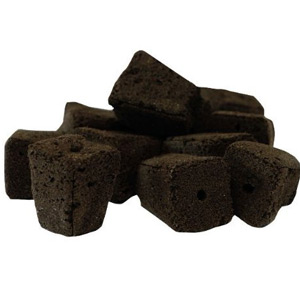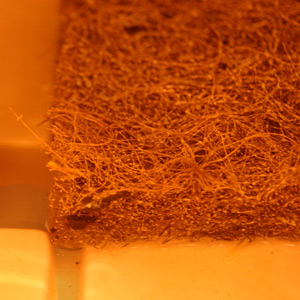
Clay Pellets - a.k.a. Hydroton
Because hydroponic systems (ideally) give you a great amount of control over the environment in which your plants (should) thrive, the yield is should be greater than if you were attempting to grow in natural soil, with natural light, and natural water…well…actually, you really do need natural water. I don’t advise mixing your own chemicals to make water; but to each there own.
So, how do you grow plants without soil?
You use soilless growing mediums for plants that allow the roots of the plant to penetrate. You can’t use large rocks in an efficient system, but you can use pebbles. However, pebbles have minerals so it’s not best to use pebbles.
Which brings me to the next point; for a hydroponic system, you want to use an inert growing medium. Inert growing mediums are inert because they contain no usable minerals or chemicals. They are neutral. This gives you the most control over the what your plants eat.

Large Rockwool Cubes
In a hydroponic system such as the ebb and flow or flood and drain, the growing medium you’re likely using is either rockwool, or clay pellets – commonly referred to by the brand name Hydroton. With either of these growing mediums it’s a good idea to lay down a 1″ thick coconut fiber mat (coco mat) on the bare surface of your flood table. This will aid in drainage and help prevent the roots from rotting. The coco mat gives the roots a place to travel when they hit the bottom of your tray. Otherwise, they could dam up the grooves in your flood table and prevent proper drainage. Without proper drainage your roots will start to rot and then bad stuff happens.
It’s not really necessary to combine clay pellets with rockwool, but don’t feel weird about using any type of starting cubes then plunging them into rockwool, that’s quite common. The “Large Rockwool Cubes” image to the right is a picture of what you would use as potential growing mediums for plants and the hole in the center is where you stick your starter plug.

Inert growing medium starter plugs
Clay pellets are reusable, just make sure you wash them thoroughly and discard any pellets that are chewed up or have too much plant material to easily wash off. It’s somewhat of a laborious process, but it’s a labor of love. You don’t have to inspect each and every pellet, but to each their own. 🙂 You’ll find the worst offenders after you’ve given them a good washing; simply run your hands through and feel for the slimy ones. They won’t be completely slime-ridden, but you should be able to feel some plant material. Look at that! I got through this whole segment without once saying “You have to wash your balls!”
Whoops.
Anyway, If you want to learn more about growing mediums, look for upcoming articles here:
- Hydroton Clay Pellets
- Rockwool
- Coconut Fiber
- Perlite
- Vermiculite

Coconut fiber mat

Tilting your flood table works too. Just make sure not to go too far. Just a little bit.